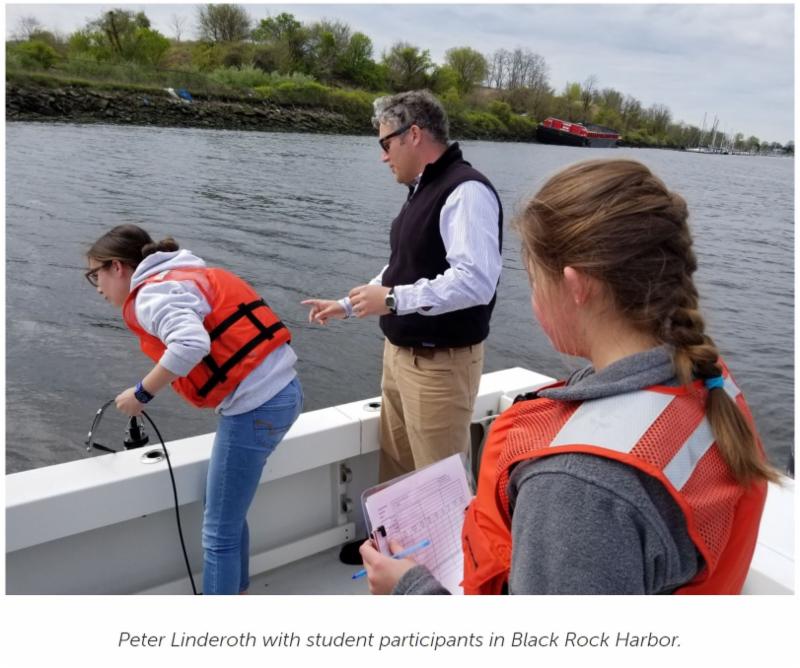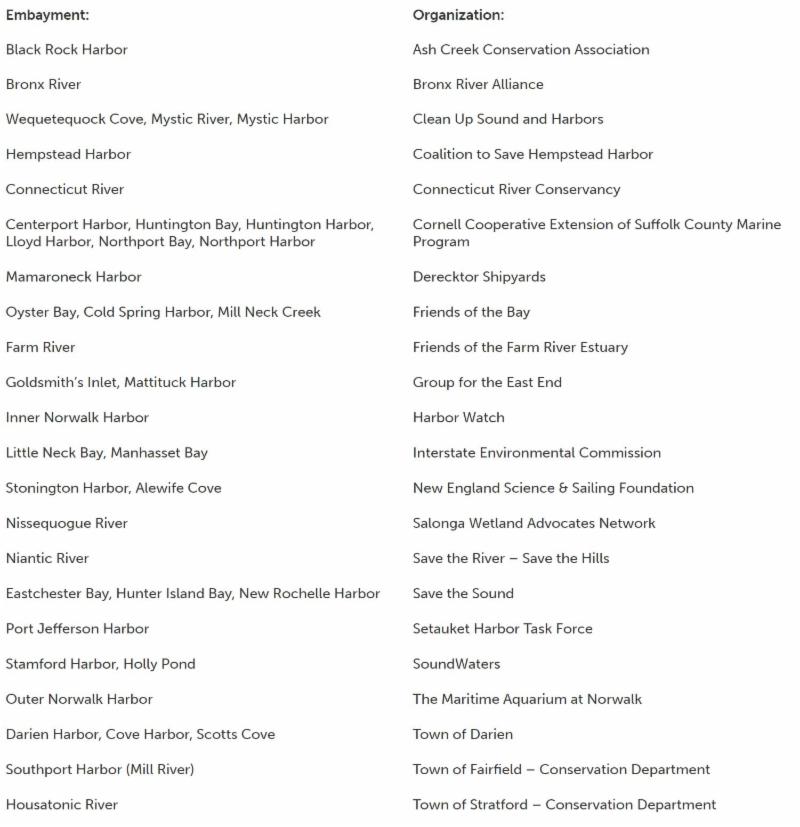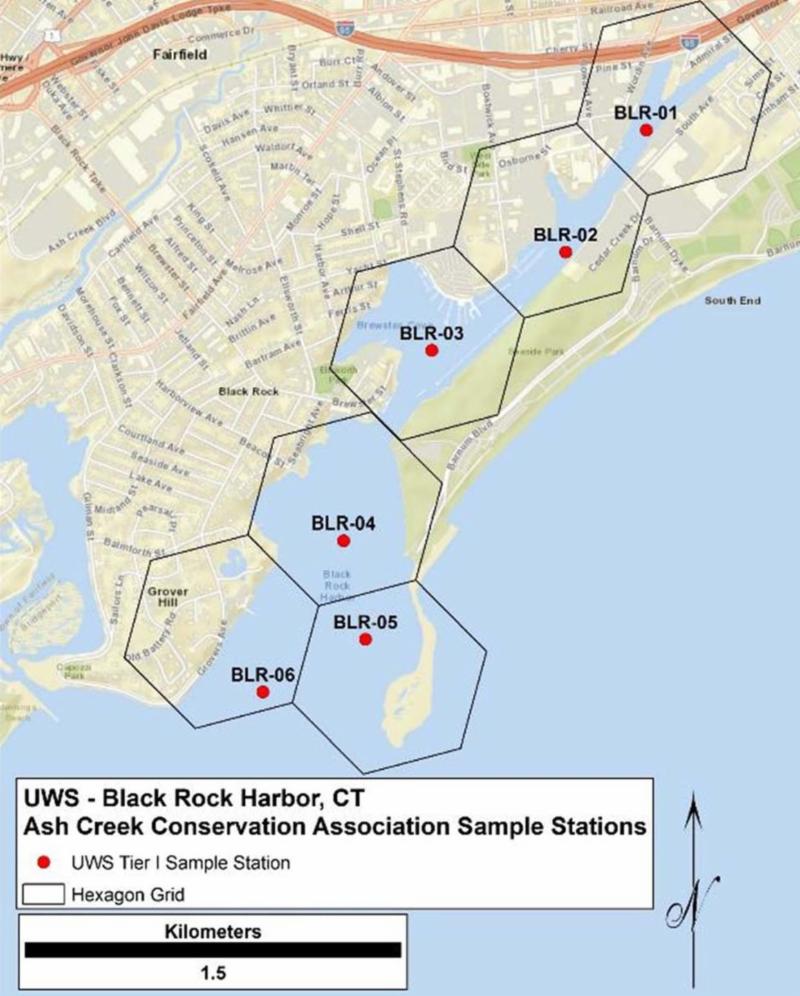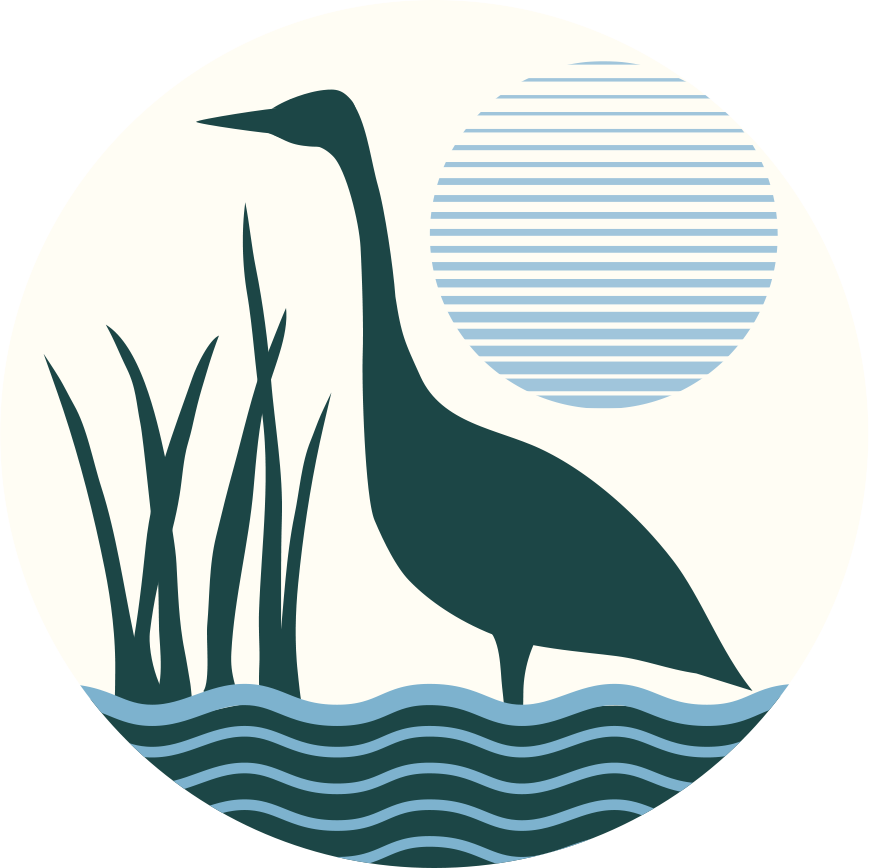Water Quality Monitoring in Black Rock Harbor

Over the next six months, 22 different monitoring groups will be heading out into 39 Long Island Sound bays and harbors during the wee hours of the morning to collect samples for the Unified Water Study. This marks the third year that Save the Sound will be administering this valuable coordinated effort to gather data that identifies the locations and impacts of excess nitrogen and other pollutants in Long Island Sound. This is the first year of ACCA’s participation in the project thanks to a coalition of community members spearheaded by councilperson Pete Spain.
Special thanks to Kevin Blagys of KB Dive Services for going through extensive training, getting up early in the morning and going out on his boat to take the water samples and enter the data from the monitors as well as the students at the Bridgeport Regional Aquaculture Science & Technology Education Center who are participating. Thank you to all our members who contributed to enable Black Rock Harbor to enter the water quality monitoring program and to the Santa Family Foundation for their generous donation. Captain’s Cove has donated the gas for Kevin’s boat for this project. It is wonderful to see how our community works together on these long-term projects!
The following article from Save the Sound’s website describes the program and ACCA’s role in it.

Unified Water Study of Sound Bays and Harbors Enters Its Third Year
May 24, 2019
On a windy Tuesday morning in May, Elena Colón hauled her twenty-first and final bucket of water from Mamaroneck Harbor into the old stone building at the tip of Harbor Island Park in Mamaroneck Harbor. Each bucket of cold Sound water was used by a different monitoring group, gathering in Mamaroneck for a day of training conducted by Colón, Save the Sound’s Environmental Analyst, and Peter Linderoth, our Water Quality Program Manager.
It took five training days to accommodate all the groups, which traveled from as far as Wequetequock Cove near the Connecticut-Rhode Island border, and Goldsmith Cove on the Northfork of Long Island, to Mamaroneck to receive training and equipment for the third year of the Unified Water Study (UWS). “These annual trainings ensure quality and consistency for our monitoring network,” said UWS study coordinator Peter Linderoth, “They’re also an opportunity for this exceptional collective of like-minded individuals to get together and discuss issues facing their corner of the Sound.”
Their shared mission: to collect water quality data from thirty-nine Long Island Sound bays and harbors to identify the impacts of excess nitrogen and other pollutants. Waterways with high nitrogen are susceptible to algae blooms, including dense mats of seaweed, and low oxygen conditions that deplete salt marshes and can cause fish die-offs.
Each week from May through October, the UWS monitoring groups rise before 5am, check and calibrate their water quality monitoring equipment, haul it down to their respective docks and set out on their boats just as the sun peaks over the horizon. “It’s critical to get out within three hours of sunrise to collect dissolved oxygen data because of the daily fluctuations of oxygen levels in these waterways. These data would not be comparable across waterways, or even in one waterway, if the sampling were to occur at different times of the day.” explains Elena Colón.
What is the Unified Water Study?
Started in 2017, The Unified Water Study was designed to assess the environmental health of Long Island Sound bays and harbors. More specifically, the UWS monitors and characterizes the impacts of nutrients like nitrogen on these waterways. The data is being used to identify Sound bays and harbors that are suffering from too much nitrogen, and to drive action to reduce nitrogen inputs and improve local water quality.
In total, twenty-two groups will monitor 39 bays and harbors in 2019 for UWS Tier I parameters which include dissolved oxygen, chlorophyll a, turbidity, temperature, salinity, and qualitative macrophytes. All participating groups are required to follow a standardized set of procedures to allow for direct comparisons between the locations monitored.
What’s new in 2019?
This year we are excited to announce the addition of Tier II monitoring in 12 locations. Tier II parameters include continuous dissolved oxygen, nutrients (nitrogen and phosphorous), and video surveys of the bay or harbor floor.
Also in 2019, two new groups have joined the study. The Bronx River Alliance will be monitoring the Bronx River, NY. Ash Creek Conservation Association in partnership with the Bridgeport Regional Aquaculture Science & Technology Education Center will be monitoring Black Rock Harbor, CT.
Who Are the Unified Water Study Groups?
Save the Sound is the UWS coordinator. The local organizations and the areas they monitor are shown below:

What’s next?
Data from the UWS will be featured in the next Long Island Sound Report Card in 2020.
Sampling locations for Black Rock Harbor are shown below:

Anyone with questions or comments about the United Water Study, please send them to: plinderoth@savethesound.org

